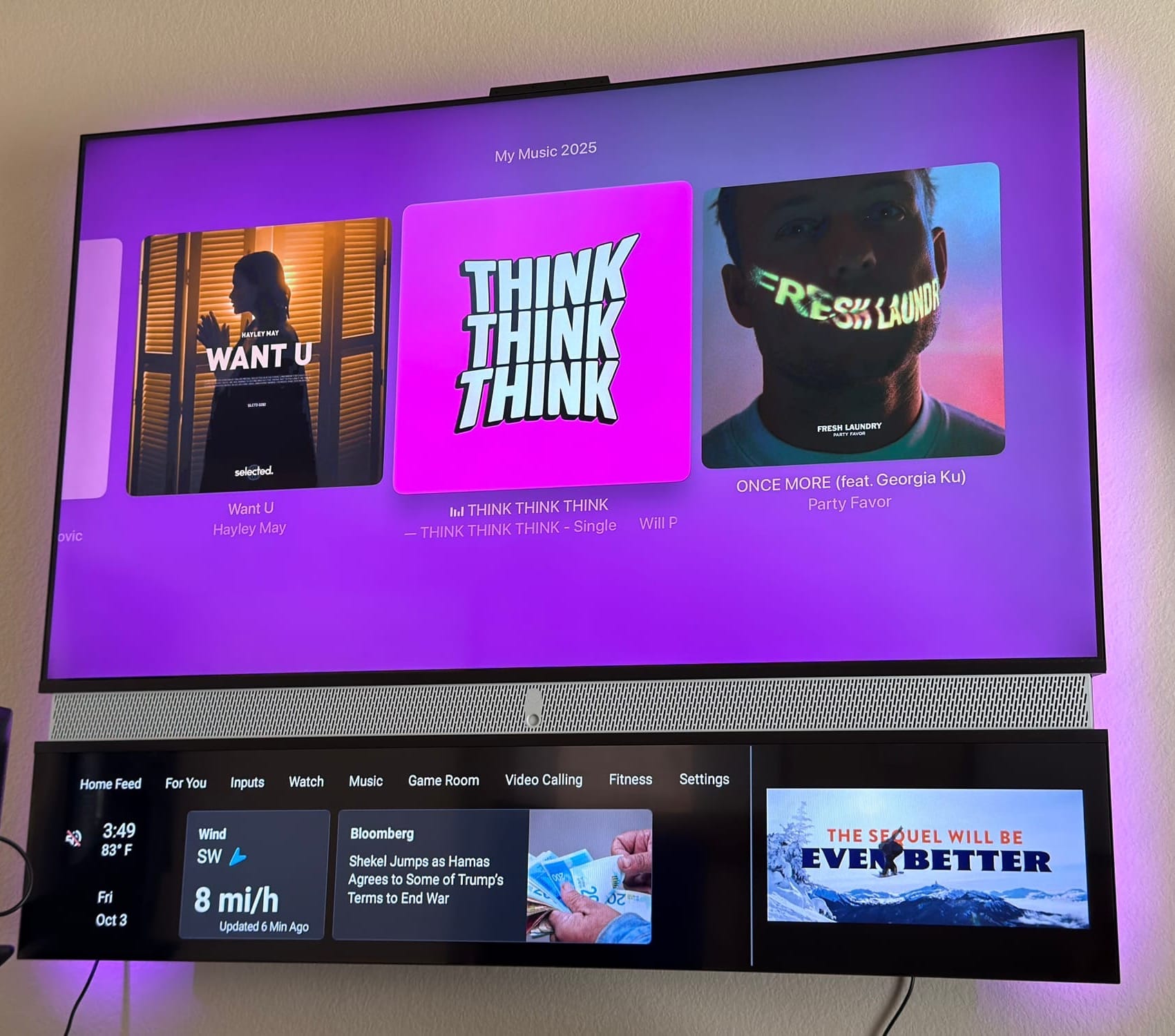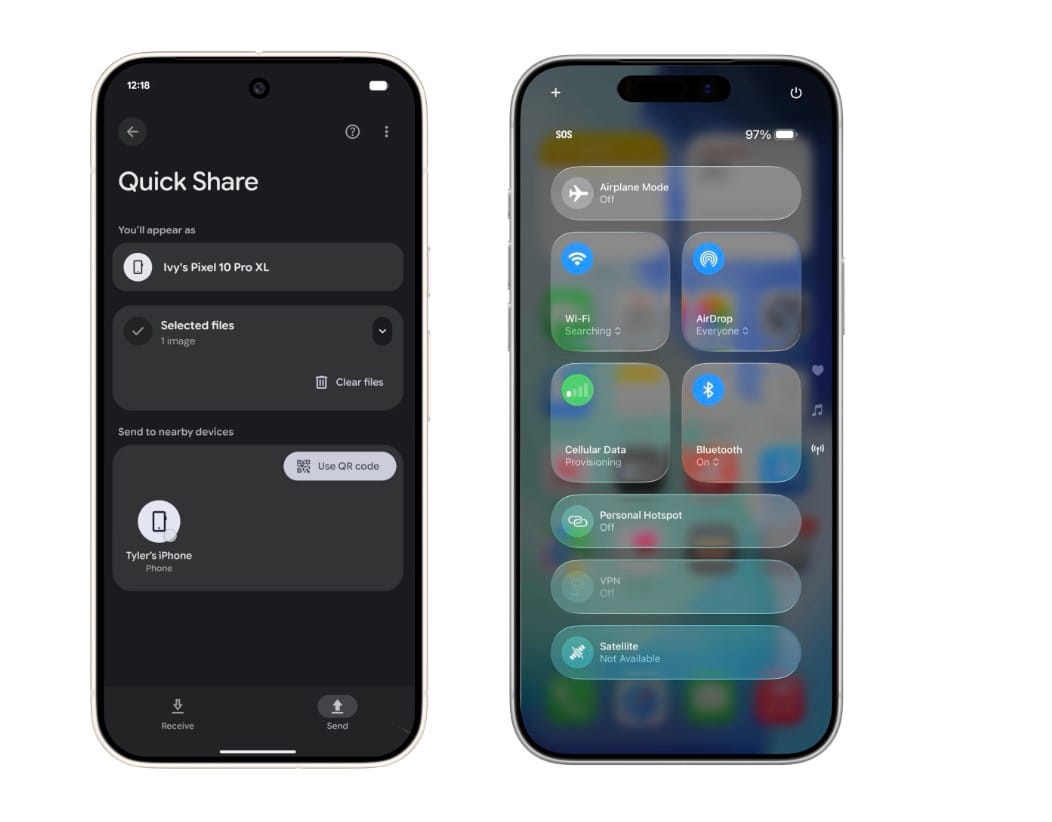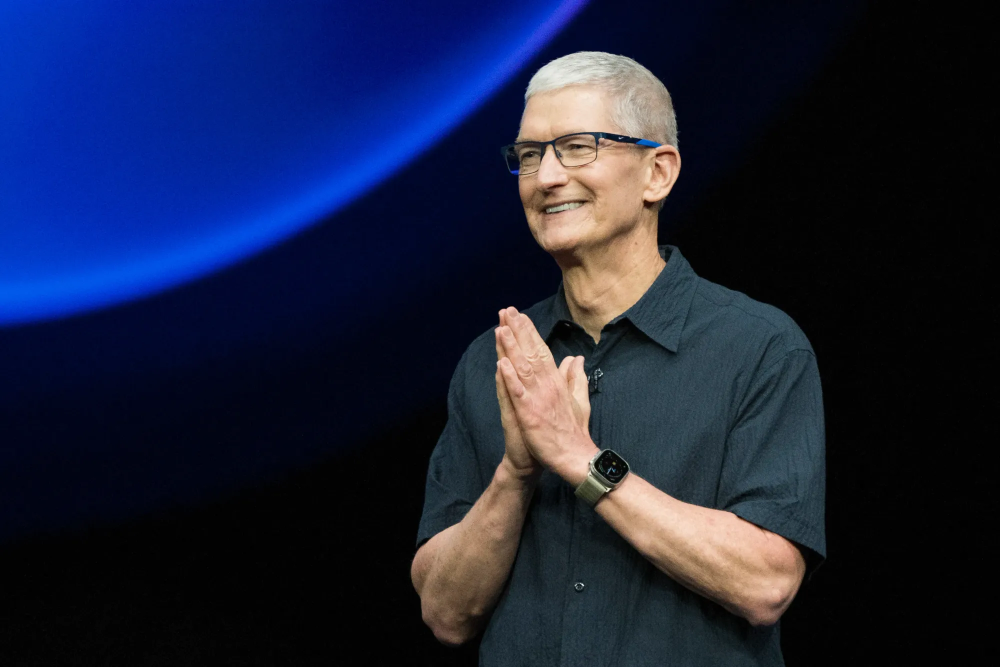The Verdict
A fascinating experiment in ad-supported hardware that's more thoughtful than expected. Free 55-inch 4K TV with competent picture quality, but constant ads and data collection raise serious privacy concerns. The trade-off is deeply personal.
What We Love
- Completely free 55-inch 4K HDR television
- Competent picture quality with vibrant colors and brightness
- Integrated Harman Kardon six-speaker soundbar included
- Secondary screen widgets provide useful ambient information
- Rear LED mood lighting reduces eye strain
- Includes webcam for video calls and fitness features
- Ads are less intrusive than anticipated—mostly peripheral
Room for Improvement
- Comprehensive data collection including viewer tracking sensors
- Secondary screen displays ads constantly, even during viewing
- $500 fee if not returned when terms violated
- Severe distribution delays—some waiting 2+ years
- Limited to 60Hz refresh rate (not ideal for gaming)
- Audio occasionally glitches requiring device reset
- Comparable 55" TVs cost just $200—questionable value trade-off
The concept of a truly free television set seems almost quaint in an era where we've grown accustomed to paying for hardware upfront and then subscribing to content separately. Yet Telly's experiment—a no-cost 55-inch 4K television subsidized entirely through advertising—represents a genuinely novel approach to consumer electronics distribution. After spending time with the device and examining the experiences of hundreds of early adopters, what emerges is less a story about compromises and more a consideration of whether the advertising model, when thoughtfully implemented, can coexist with quality viewing experiences.
The Primary Display: Competent Where It Counts
The main panel delivers what matters most for everyday viewing: brightness and color reproduction that hold up well across varied content. There's a vibrancy here that doesn't feel artificially oversaturated, striking that increasingly rare balance between punch and accuracy. Multiple users have praised the picture quality as "stunning", with one reviewer noting it delivers "highly detailed video content in rich colors" even after extended use.
The limitation to 60Hz refresh will matter to some—particularly gaming enthusiasts or those sensitive to motion handling—but for the vast majority of television and film content, it's a non-issue. Most streaming content and broadcast television operates at 24, 30, or 60 frames per second anyway, making the panel's capabilities appropriately matched to its likely use cases. This is where understanding the hierarchy of display priorities becomes relevant: for a television primarily intended for streaming services and traditional broadcast content, the quality of the HDR implementation and color accuracy matters more than high refresh rates designed for competitive gaming.
Some users have noted the TV works particularly well with streaming platforms, gaming consoles, and live television, suggesting the 4K HDR panel performs capably across diverse content types. The display doesn't aspire to compete with flagship OLED or high-end Mini-LED sets, but it doesn't need to—its performance sits comfortably within the realm of mid-tier displays that most consumers would find perfectly acceptable for daily use.
The Second Screen: Less Intrusive Than Anticipated

The elephant in the room, of course, is that persistent second display sitting below the main panel. This is where Telly collects its pound of flesh, and it's worth examining how they've approached this unusual design constraint. The execution is, frankly, more restrained than expected. The bottom panel displays an advertisement in one corner, with stock updates, news, and weather filling the remaining space. Video advertisements occupy roughly a third or less of this secondary screen—enough to serve their purpose without dominating the peripheral vision.
The community response to this feature has been mixed but revealing. One user noted that "having the screen below the main TV really doesn't bother me", echoing the experience that the second screen becomes part of the visual landscape rather than an active distraction. However, critics point out that the secondary screen stays illuminated at all times while watching content, and only turns off completely when holding the power button for three seconds—a design decision that prioritizes ad visibility over user control.
The remainder is dedicated to widget functionality, which transforms what could have been purely commercial real estate into something approaching utility. The widgets themselves prove surprisingly worthwhile. Quick-glance information—weather forecasts, news headlines, stock tickers, time—sits exactly where you'd naturally look during a pause in viewing. News content comes from sources like TIME, FOX, and CNN, and clicking headlines opens articles on the main display, though with limited browsing capability beyond the provided links.
There's an argument to be made that this replicates functionality already present on our phones, but the passive availability has its own appeal. You're not actively context-switching or pulling attention away from the television; the information is simply there when you need it. The question becomes whether this ambient information stream justifies the constant presence of advertising, and that calculation will vary considerably based on individual tolerance thresholds.
The Soundbar: Adequate with Caveats
Telly has partnered with Harman Kardon for the integrated six-speaker soundbar, a branding decision that carries weight in the audio space. The execution requires some qualification and, based on user feedback, delivers mixed results depending on expectations and environment.
One user's sister reported that "the sound quality was really good, much better than any other TV she's heard", suggesting the integrated solution outperforms typical television speakers significantly. This isn't replacing a dedicated surround sound system—the spatial imaging and dynamic range simply aren't there. But with modest adjustment of the equalizer settings, it delivers perfectly serviceable audio for casual viewing.
However, some users report technical issues, noting that "sometimes the sound will just be really bad or will just have no sound at all", though these problems often resolve after unplugging the device briefly. This suggests potential software stability concerns rather than fundamental audio hardware limitations.
For apartment dwellers or those without the space or inclination for multiple speakers and a receiver, the soundbar eliminates one more barrier to setup. The Harman Kardon branding suggests attention to audio engineering, and the six-speaker configuration provides more drivers than most integrated TV solutions. It's adequate, which in context, is precisely what it needs to be—though users seeking premium audio experiences will inevitably look elsewhere.
The Ancillary Features
Telly has included several thoughtful touches that elevate the package beyond bare-minimum functionality. The rear LED mood lighting feels like a feature borrowed from the enthusiast market—ambient backlighting that reduces eye strain and adds a subtle visual flair to the viewing environment. It's not essential, but it demonstrates attention to the overall experience rather than purely utilitarian design.
The package includes additional features like a webcam for video calling, motion-controlled video games, and fitness studio capabilities, positioning the device as more than just a passive display. These extras suggest Telly's vision extends beyond traditional television consumption toward a more interactive living room hub—though whether users engage with these features long-term remains an open question.
The Boot Experience
The Telly Today news reel that greets you at startup occupies an interesting space. It's clearly designed to increase engagement with the device and, by extension, the advertising ecosystem. Yet there's enough editorial discretion in the content selection—interesting science tidbits, cultural moments, unexpected facts—that it occasionally justifies its existence beyond pure commercial function.
The experience has been characterized as television that "never stops showing ads", with the secondary screen remaining active even during gameplay and video streaming. Whether you'll appreciate the boot-time content feed depends heavily on your tolerance for curated content at startup, but it's at least attempting to provide value rather than serving as pure filler.
The Value Proposition and Privacy Concerns
Here's where the assessment becomes more philosophical than technical. For zero dollars upfront, Telly delivers a functional 55-inch 4K television with integrated sound and genuinely useful secondary features. The company's privacy policy explicitly states that "the value of your personal information is reasonably related to the value of the Telly Device and experience we provide to you"—a remarkably transparent acknowledgment of the data-for-hardware exchange.
The terms of service reveal the actual constraints of "free." Users must agree to use the device as the main TV in their home, constantly keep it connected to the internet, and regularly watch it. Violation of these terms triggers a requirement to return the device, with a $500 fee if the television isn't sent back. The device includes sensors that can determine how many people are watching at a given time, raising legitimate privacy concerns about the extent of data collection.
Some users have expressed concerns about terms of service changes, with one noting the agreement "evolved to spy on users and take funds from their credit cards rather than trade TV for data", suggesting the contractual relationship has shifted since initial launch. These concerns aren't trivial—they represent the core tension in ad-supported hardware models where the product is, functionally, the user rather than the device.
The advertising, while omnipresent, has been implemented with enough restraint that it doesn't fundamentally compromise the viewing experience for typical use cases. You're aware of it, certainly, but it remains peripheral rather than intrusive for most content consumption. However, one three-month evaluation concluded that the constant ad presence and data collection made the trade-off not worth it, especially when comparable 55-inch televisions retail for just a few hundred dollars.
The Distribution Challenge
An issue that has plagued Telly more than the hardware itself is distribution. Numerous users report signing up during the initial launch period in 2023 and still waiting for delivery as of 2025, with one early applicant noting they were "promised to be one of the first recipients" but experienced "unfortunate delays" extending beyond two years.
The company claims over 100,000 people registered in the first 36 hours, and approximately 500,000 people have signed up for the program, but fulfillment has been inconsistent at best. This creates a peculiar situation where assessing the product's value becomes secondary to the question of whether prospective users will actually receive one. For a startup attempting to disrupt television economics through scale, the inability to deliver units undermines the entire proposition.
Final Assessment
The question becomes less about whether the hardware is "good enough" and more about individual tolerance for the ad-supported model and data collection practices. If you're someone who finds any persistent advertising or comprehensive data gathering unacceptable, no amount of thoughtful implementation will change that calculus. The privacy implications alone may disqualify the device for many potential users who value data sovereignty over hardware savings.
But if you can accept advertising as the cost of admission—particularly advertising that largely stays out of your primary field of view—and you're comfortable with the data collection inherent to the business model, then Telly has constructed something worth considering. Users who have received and used the device often describe it as "the highest quality TV I have ever had" and praise the concept of changing the television market.
However, the counterargument is equally valid: when serviceable 55-inch televisions sell for under $200, the value proposition of accepting perpetual advertising and comprehensive data collection becomes increasingly questionable. The decision ultimately hinges on how you value privacy, autonomy over your viewing experience, and freedom from persistent commercial messaging.
The television market has long operated on the assumption that consumers will pay hundreds or thousands of dollars for hardware and then navigate an increasingly complex landscape of subscription services. Telly proposes an alternative: capable hardware at no upfront cost, with advertising that respects your attention more than it exploits it—though at the expense of continuous data collection and viewing restrictions. Whether that trade-off appeals is deeply personal, but the execution itself suggests the ad-supported hardware model has more potential than initial skepticism might imply, even as it raises important questions about privacy, user autonomy, and the hidden costs of "free" products in the modern technology landscape.












Discussion